Optimizing ABM Campaigns Using the Ideal Marketing Tech Stack
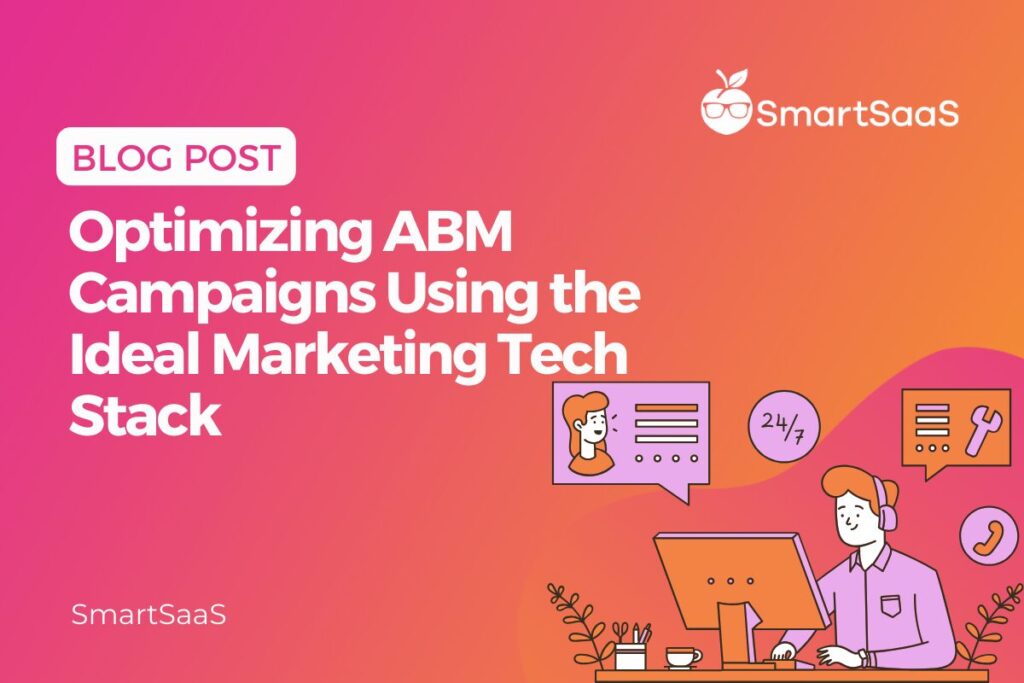
Today’s marketing landscape hinges on targeted precision and customization. A standout approach that has recently risen in popularity is Account-Based Marketing (ABM). ABM transcends traditional strategies, representing a paradigm shift that zeroes in on nurturing high-value accounts for enhanced relationship building and business growth.
For those looking to leverage ABM’s potential, you’re in good company. Numerous companies are exploring ways to deploy ABM campaigns that yield tangible outcomes. Embarking on this path, however, requires the proper toolkit.
This blog post will break down the key elements of a successful Account-Based Marketing Technology Stack. We’ll guide you through designing campaigns that effectively engage and appeal to your top-tier prospects. Join us as we uncover the intricacies of a solid ABM strategy and demonstrate why it stands as a cornerstone in the realm of B2B marketing.
Building Your Account-Based Marketing Technology Stack
Account-Based Marketing (ABM) owes much of its success to the continuous evolution of Marketing Technology (MarTech). The advent of marketing automation platforms paved the way, with countless new MarTech software providers entering the scene. Within MarTech, various subcategories cater to different aspects of marketing, including email marketing, interactive content, advertising, video marketing, events, search (SEM and SEO), content marketing, social media marketing, and more. This landscape is ever-evolving.
However, to execute your ABM campaigns effectively, you’ll need a core set of software tools. These essential platforms empower your B2B marketing and sales teams to implement account-based marketing at scale.
1. Customer Relationship Management (CRM)
CRM software is an indispensable tool for maintaining and optimizing customer relationships. It consolidates customer data, enabling personalized interactions, tracking preferences, and managing purchase histories. In sales campaigns, a CRM system ensures precise communication, follow-up, and customer satisfaction, all contributing to increased sales and enduring customer loyalty.
2. Marketing Automation
Marketing automation tools streamline and enhance repetitive marketing tasks, such as email campaigns, lead nurturing, and data analysis. In sales campaigns, marketing automation ensures timely, tailored communication with leads and prospects. It also provides invaluable insights into customer behavior, facilitating informed decision-making and strategy refinement for the sales team.
3. Content Management System (CMS)
A CMS is a fundamental platform for creating, managing, and disseminating content. In sales campaigns, it plays a pivotal role in the consistent production and distribution of content, from product descriptions to marketing materials. A CMS enables content personalization and ensures that the sales team can access up-to-date and relevant content at all times.
4. Social Media Management
Establishing a strong presence on platforms like Facebook, Twitter, and LinkedIn is pivotal. These social media platforms help you share company news, promote posts, and engage your target audience, fostering connections and driving engagement.
5. Advertising
Advertising tools are instrumental for expanding a brand’s reach and attracting leads. Online advertising, including pay-per-click (PPC) and display advertising, allows businesses to target specific demographics and interests. In sales campaigns, advertising tools are vital for driving traffic to landing pages, capturing leads, and raising awareness about products or services. They also provide essential data for ad campaign optimization and achieving a favorable return on investment (ROI).
Creating Account-Based Marketing Campaigns
In Account-Based Marketing (ABM), it’s essential to shift your perspective from the traditional B2B buyer’s journey to something more encompassing—the account’s journey. Unlike the buyer’s journey, which primarily focuses on the purchase decision, the account’s journey encompasses the entire customer experience. To craft successful ABM campaigns that traverse this transformative path, consider these fundamental rules:
Account-Centric Approach: ABM begins with identifying high-value accounts and crafting personalized strategies for each. Tailor your messaging, content, and engagement specifically to address the unique needs and pain points of these target accounts.
Full Funnel Engagement: Unlike traditional marketing that often emphasizes top-of-funnel activities, ABM covers the entire customer journey. From awareness and consideration to decision and post-purchase stages, ensure your campaigns engage accounts at every touchpoint.
Cross-Channel Consistency: Maintain consistency in your messaging and branding across all channels and touchpoints. This unified approach reinforces your brand’s identity and message in the minds of your target accounts.
Content Relevance: Develop content that speaks directly to the challenges and objectives of your target accounts. Whether it’s blogs, webinars, case studies, or emails, content should be highly relevant and tailored to each stage of the account’s journey.
Collaboration: Foster alignment between your marketing and sales teams. Successful ABM campaigns require close collaboration to ensure that messaging is consistent and sales efforts are synchronized with marketing activities.
Data-Driven Decision-Making: Leverage data and analytics to track the performance of your ABM campaigns. Continuously monitor and refine your approach based on insights, ensuring your efforts remain effective.
Steps to Creating Account-Based Marketing Campaigns
- Find Your Ideal Customer
Begin by defining your Ideal Customer Profile (ICP). Collaborate between marketing and sales teams to identify the right company size, industry, and personas within those companies who will champion your product or service. Create detailed personas, including job titles, roles, responsibilities, and use cases.
- Craft Tailored Messages
Tailor your messages for specific industries and personas within your target accounts. Your messaging should resonate with the audience, addressing their unique pain points and objectives. Remember that the message should be relevant to the audience, whether it’s a CMO at a SaaS company or an IT manager at a bank.
- Time Your Message
Align your message with the stage of the buyer’s journey. Different stages require different messages and content. For new accounts, provide informative content to educate them about your offering. As accounts progress to the prospect, opportunity, and customer stages, offer content demonstrating ROI, success stories, and implementation guidance.
- Land and Expand
After securing a deal, look for opportunities to expand your presence within the account. Identify a “power user” or “champion” to serve as a use case for showcasing your product’s success.
- Cross-Sell/Upsell
Explore opportunities for upselling to existing contacts in the account. Provide training content, like webinars, to facilitate cross-selling and upselling.
- “Always On” Air Cover
Nurture your customer relationships continuously. Create content tailored for your clients, such as advertising, quarterly reports, leadership webinars, and customer-exclusive events.
- Be Where Your Accounts Are
Understand the channels your target accounts engage with, both digital and offline. Tailor your engagement strategy accordingly, whether it’s personalized videos, social media, emails, or events.
- Serve Instead of Sell
Focus on thought leadership and serving educational content rather than pushing your product or service. Nurturing accounts is paramount for staying top of mind when they are ready to buy.
- Measure the Results
Track the performance of your ABM campaigns with success metrics. Monitor the number of contacts reached, stage progression, and the follow-up actions required. Continuously analyze the results to refine your strategies and achieve the best outcomes.
Following these steps, you can effectively create and execute account-based marketing campaigns that drive engagement, nurture leads, and foster lasting customer relationships.
Recommended Tools You Can Use For Your ABM Campaigns
Many of these tools are extensively utilized within the market and have established their remarkable efficiency in enhancing sales and marketing strategies. Feel free to carefully evaluate and select the tool that best aligns with the specific needs, financial resources, and operational requirements of your business.
1. Customer Relationship Management (CRM)
- Salesforce: A robust CRM system that offers many features and is suitable for small to enterprise-level businesses.
- HubSpot CRM: An easy-to-use, scalable CRM with integrated marketing and sales tools.
- Zoho CRM: Offers a variety of sales and marketing automation features and is known for its affordability.
- Microsoft Dynamics 365: A comprehensive CRM solution that integrates with Microsoft’s other business tools.
- Pipedrive: A user-friendly CRM that focuses on sales pipeline management.
2. Marketing Automation
- HubSpot: Not just a CRM, HubSpot provides powerful marketing automation features.
- Marketo: A well-established marketing automation platform with strong enterprise capabilities.
- Mailchimp: Known for its email marketing, Mailchimp also offers marketing automation tools.
- ActiveCampaign: Offers advanced automation capabilities combined with email marketing.
- Eloqua (by Oracle): A comprehensive marketing automation tool suitable for large enterprises.
3. Content Management System (CMS)
- WordPress: A highly popular and versatile CMS known for its ease of use.
- Joomla: Offers advanced customization options for websites.
- Drupal: Known for its flexibility and robust security features.
- Wix: A user-friendly CMS that’s particularly suitable for small businesses.
- Squarespace: Combines website building with hosting and is known for its beautiful templates.
4. Social Media Management
- Hootsuite: A comprehensive social media management tool for scheduling, monitoring, and analytics.
- Buffer: Focuses on social media scheduling and content planning.
- Sprout Social: Offers a unified platform for social media management, engagement, and reporting.
- SocialBee: Known for its category-based scheduling and content recycling.
- Agorapulse: Offers social media management, monitoring, and reporting features.
5. Advertising
- Google Ads: The most widely used platform for pay-per-click advertising.
- Facebook Ads Manager: Powerful for social media advertising with detailed targeting options.
- LinkedIn Advertising: Ideal for B2B marketing and targeting professionals.
- Twitter Ads: Offers advertising solutions for tweets, trends, and accounts.
- Demandbase: A B2B-focused platform for account-based advertising and targeting.
To Wrap Things Up
Account-based marketing (ABM) has become increasingly popular for its focus on cultivating high-value accounts to foster growth and strengthen relationships. A crucial aspect of successfully implementing ABM is choosing the right marketing technology stack.
Consider integrating tools like Customer Relationship Management (CRM), Marketing Automation, Content Management Systems (CMS), Social Media Management, and targeted Advertising platforms.
When developing your ABM strategy, it’s vital to keep several factors in mind. These encompass identifying your ideal customer, creating customized messaging, timing your outreach effectively, adopting a ‘land and expand’ approach, cross-selling/upselling, providing constant support, being present where your accounts are, prioritizing service over direct selling, and meticulously tracking your results.
At SmartSaaS, we advocate for the use of these marketing tools, as discussed in this blog. Doing so can transform the traditional sales funnel into a more streamlined process, significantly boosting your ability to achieve a broader range of sales goals.


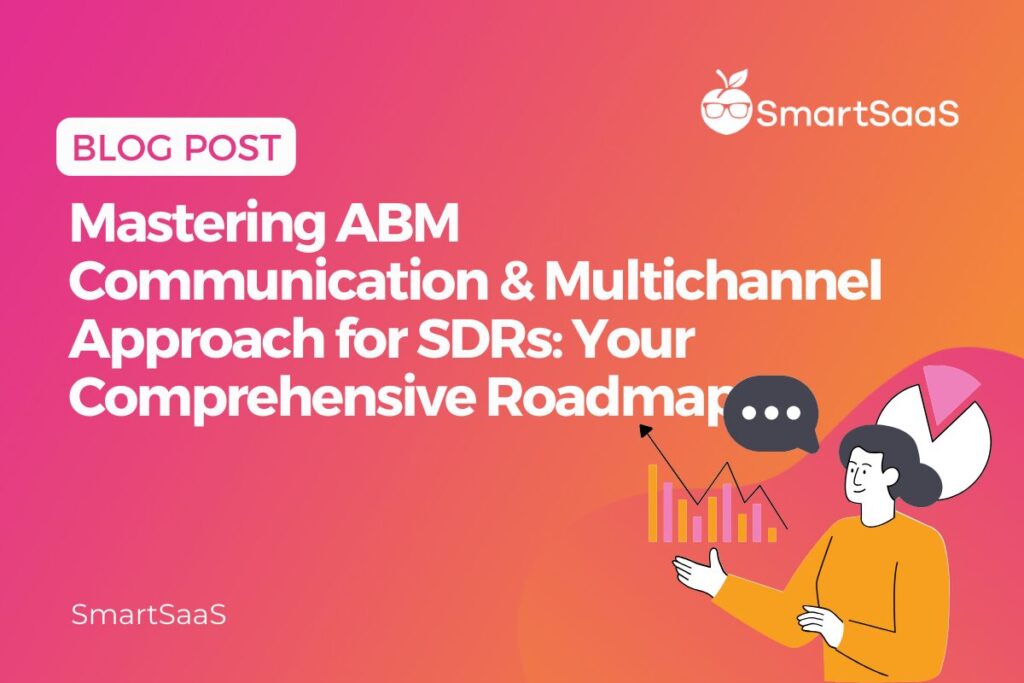
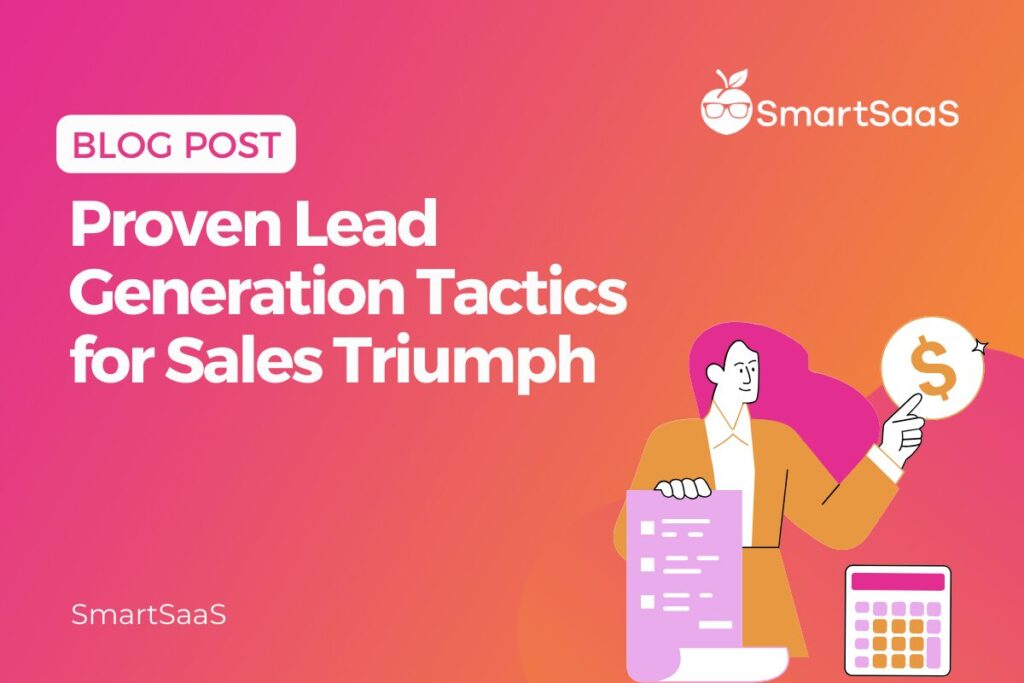
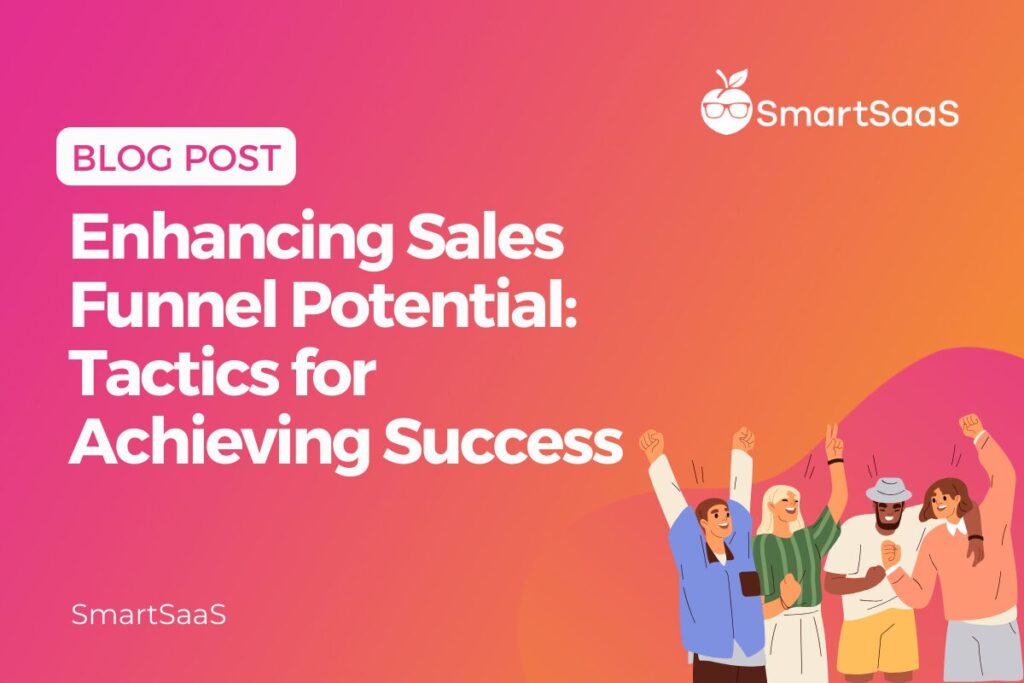
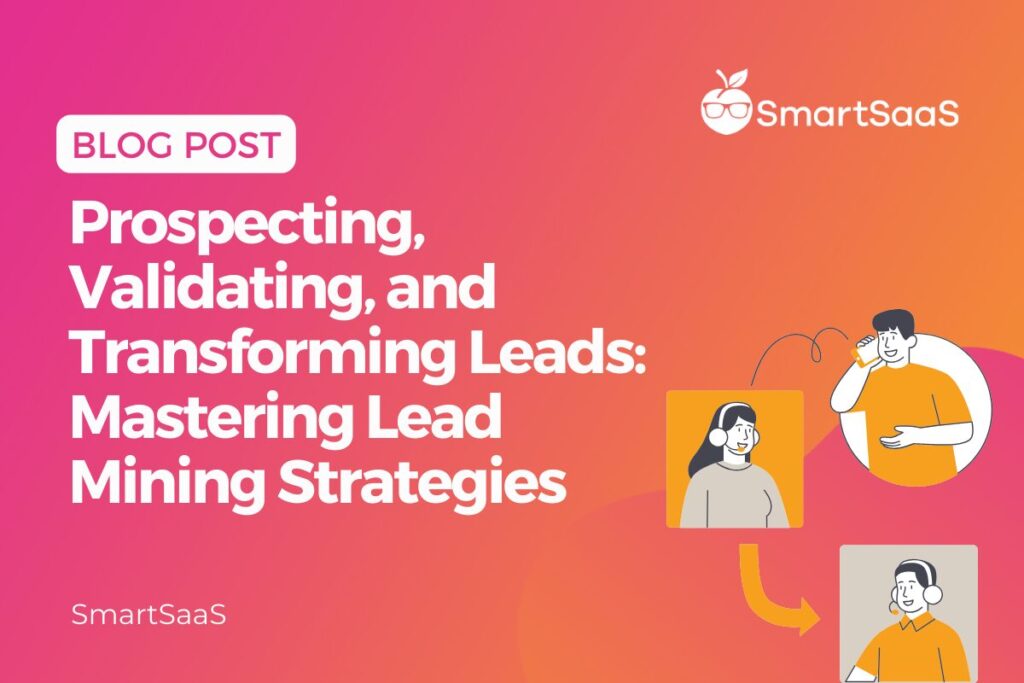
Responses